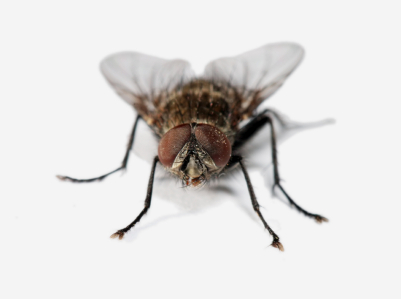Biology and Life Habits

The Cluster Fly is widely distributed throughout North America and Europe. The presence of Cluster Flies is directly related to the presence of its host, the earthworm. Reliable is a Pickering company taking care of cluster flies in Ontario towns such as Ajax and Whitby.
The common name of this species represents its gregarious behaviour of gathering in clusters before hibernation. One by one they will enter a building in early fall to seek shelter from cooler temperatures. When the weather warms, the Cluster Flies emerge from their hiding places and exit the building. Their presence in large numbers is often annoying to the building’s occupants as the flies try to exit the building.
The adult fly is slightly larger than the house fly about 3/8” inches (8mm) long. Its robust body is dark gray, nonmetallic and covered with short golden hairs. Adult flies mate outdoors and lay their eggs in the soil. The eggs hatch into larvae that parasitize earthworms. Within 27 to 39 days the adult flies emerge and the cycle starts over again. Approximately four generations per year may occur.
Questions and Answers
Q – Do Cluster Flies bite?
A – No! Cluster Flies do not bite. They are more of a nuisance than anything else.
Q – Is it typical to see hundreds of dead flies on the window ledges?
A – Most definitely! As the outside temperature rises so do the flies. Large numbers of flies will leave their hibernation sites and try to get outside to mate. The first areas where you will see them are usually on the south and west facing walls of the building.
Q – Are there any health issues associated with Cluster Flies?
A – The large numbers of flies that die within the building can attract secondary pests such as beetles and rodents. Some respiratory ailments may occur from air borne insect fragments as the dead, dried out flies are crushed or vacuumed up.
Preparation Guidelines for Fly Treatment
1. Sealing all exterior cracks and crevices.
2. Ensure access to attic area is available.
3. Wear respiratory protection and vacuum up flies inside.
4. Replace articles and items that are on windows and window ledges.
5. Ensure all children’s toys are removed from near windows and exterior outside walls.
6. Ensure pets are kept inside the house and in a non-treated room for four hours.
7. Reliable will treat all window ledges outside, the attic space as well as the exterior foundation and walls of the building
